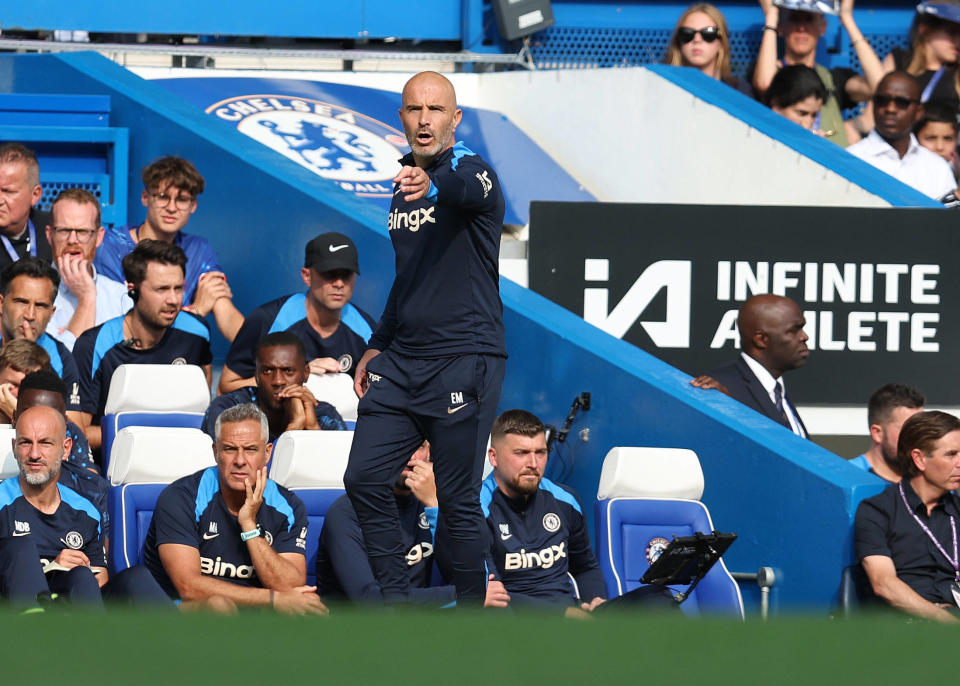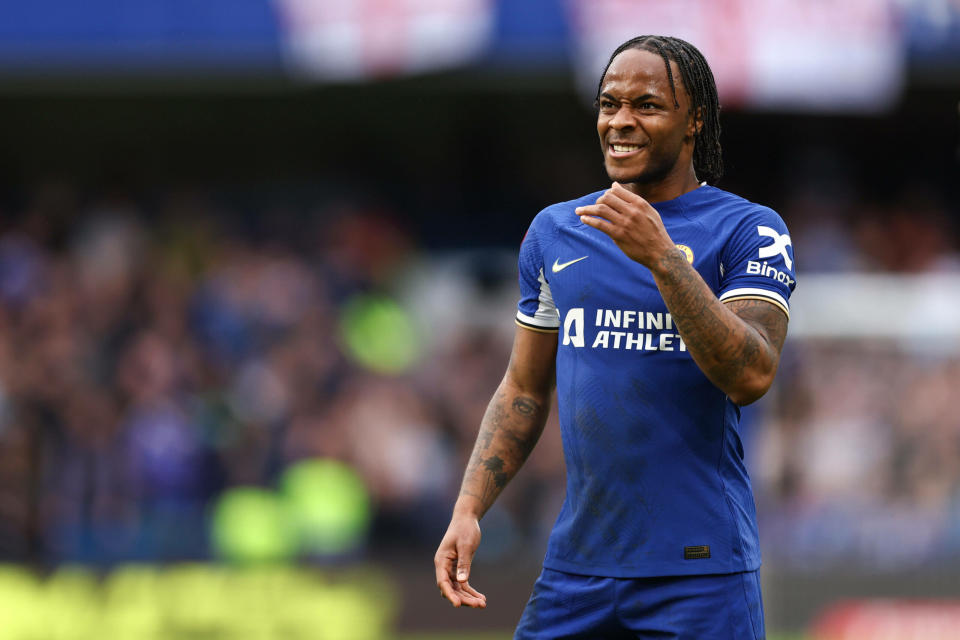Chelsea’s Transfer Chaos: Can Maresca Manage a 42-Player Squad?

Chelsea’s Squad Overhaul: Enzo Maresca’s Challenge and the Road Ahead
Chelsea, a club synonymous with success, now finds itself in a precarious position. With a staggering 42 players listed in the first-team squad, the question on everyone’s mind is whether the Blues have a coherent plan. Enzo Maresca, the new man at the helm, faces a monumental task of trimming down this bloated squad while keeping the club competitive on all fronts. This piece delves into the current state of Chelsea under Maresca’s leadership and the challenges that lie ahead.
Chelsea’s Recruitment Dilemma
Critics have been quick to label Chelsea’s recruitment strategy as chaotic. The club has been accused of “recruiting badly,” and the oversized squad is a clear reflection of this. With 42 players officially listed, it’s evident that not everyone has a future at Stamford Bridge. Many haven’t even been seen in training sessions, leaving their status in limbo.
Enzo Maresca, in his two-month tenure at Chelsea, has been repeatedly questioned about the futures of several players. Notably, he left Raheem Sterling, one of the club’s most high-profile players, out of his first Premier League squad in the 2-0 defeat to Manchester City. This decision has sparked debate among fans and pundits alike.

The sale of England midfielder Conor Gallagher to Atletico Madrid has been particularly controversial. The move hasn’t gone down well with certain sections of the Chelsea fanbase, especially with home-grown talents like Armando Broja also on the brink of departure. Broja is set to join Ipswich on loan, with an obligation to buy, further reducing the club’s academy representation in the first team.
Other players facing uncertain futures include defenders Ben Chilwell, Axel Disasi, and Trevoh Chalobah, along with midfielder Carney Chukwuemeka. While Disasi made a return in Chelsea’s 2-0 win against Servette in the UEFA Conference League play-off, the rest remain in the cold. Even Noni Madueke, who scored in that game, has been linked with a move to Newcastle, adding to the uncertainty.
As Maresca aptly puts it, “The reality is until the transfer window is closed anything can happen,” indicating that further changes could be on the horizon.
Chelsea’s Transfer Activity: Is There a Plan?
Despite the challenges, Chelsea has been the most active Premier League club in the transfer window. The Blues have signed 11 players, with Joao Felix’s £45m move from Atletico Madrid being the latest addition. However, this aggressive approach has left them open to criticism for stockpiling players and lacking a clear direction.
Much of this criticism has been directed at chairman Todd Boehly, though it’s co-owner Behdad Eghbali who is believed to be the driving force behind the club’s recent activities. The American consortium’s takeover of Chelsea in 2022 has brought about significant changes, but questions remain about whether these changes are for the better.
One of the most pressing issues is the apparent lack of a long-term strategy. Chelsea’s recruitment drive has seen them spend a staggering £1.5bn on young talent from across the globe. While this approach is intended to build a squad for the future, it has also created an immediate problem – the squad is too large, and not all players can be accommodated.
During pre-season, Maresca’s squad ranged between 22 and 28 senior players, but several more need to be offloaded. Sterling and Chilwell have been offered to other clubs, while Chalobah is widely expected to be sold. Talks are also ongoing to send Romelu Lukaku and Chukwuemeka to Napoli.

Chelsea’s overseas loan spots are already filled, with three players expected to join partner club Strasbourg in France. Others will likely go out on loan within English football. This strategy aims to reduce the wage bill and develop younger players before they become stars, but it also feels like a scattergun approach.
The club claims to have reduced its wage bill by over 50% under Boehly and Eghbali’s ownership. However, it’s difficult to verify this figure independently. What is known is that several high-profile players are on wages below market rates. For instance, Cole Palmer was earning less than £100,000 a week before his contract renewal, while Moises Caicedo, who joined for a British record fee, is on £150,000 a week. Mykhailo Mudryk, despite costing £62m, is on £97,000 a week.
The idea is that if these players don’t develop into stars, Chelsea can still sell them, as their wages remain relatively low. But this approach is fraught with risk. If the gamble doesn’t pay off, Chelsea could be left with a squad full of players who aren’t good enough to compete at the highest level, yet can’t be offloaded easily.
Managing The Oversized Squad
One of Maresca’s immediate challenges has been managing this oversized squad. In a recent press conference, he mentioned that he had “21 or 22 players” training with the first team ahead of their Conference League play-off against Servette. However, there’s another group of “15 players” who are training separately.
This secondary group, colloquially known as the ‘bomb squad’ in the media, is officially referred to as the ‘loan group’ within the club. Led by loan technical coach Carlo Cudicini, with Ed Brand assisting, this group trains using the first-team facilities but at different times to avoid clashing with Maresca’s main squad.
This approach has allowed Maresca to keep his core group focused, away from the frustrations of those who are likely to be loaned out or sold. Midfielder Kiernan Dewsbury-Hall, when asked about the squad’s atmosphere, emphasised that the players remain in a “bubble” and are focused on training and performing on the pitch.
“We are in a bubble,” Dewsbury-Hall stated. “You can’t let that sort of thing affect you. We just go out every day and train as well as we can, getting ready for the matches.”

The Financial Gamble
Chelsea’s strategy, while ambitious, is not without significant financial risks. According to data from Transfermarkt, Chelsea’s players have a combined 191 years left on their contracts. This might be seen as a positive at Stamford Bridge, as it allows the club to avoid losing players on free transfers. However, it also means that the club is tied to long-term commitments that could backfire if results on the pitch don’t improve.
The club’s owners believe that their reduced wage structure will allow them to sell players when necessary, thereby staying within the Premier League’s profit and sustainability rules (PSR). However, Chelsea’s recent financial results paint a concerning picture. The club has announced losses of £90m and £121m in the two sets of accounts released since Boehly’s consortium took over.
Moreover, Chelsea has failed to qualify for the Champions League in either of the seasons under new ownership, finishing 12th and sixth respectively. The lack of silverware since the takeover further fuels criticism of the club’s direction.
The Road Ahead
For all the criticism, Chelsea remains hopeful of turning things around. The club’s ambition is to return to the Champions League and challenge for trophies once again. Maresca, in his first season in charge, faces the daunting task of moulding a cohesive unit from the myriad of players at his disposal.
As the transfer window edges closer to closing, the pressure on Maresca and the Chelsea board will only intensify. Success will hinge on finding the right balance between offloading surplus players, integrating new signings, and instilling a winning mentality within the squad.
In the coming months, all eyes will be on Stamford Bridge to see if Chelsea can silence their critics and embark on a path to glory once more.

 Yahoo Sports
Yahoo Sports 
